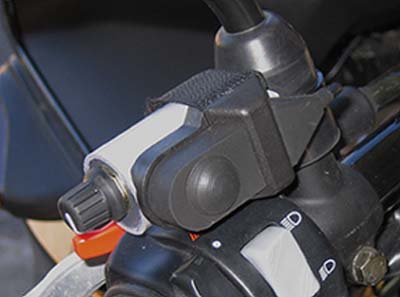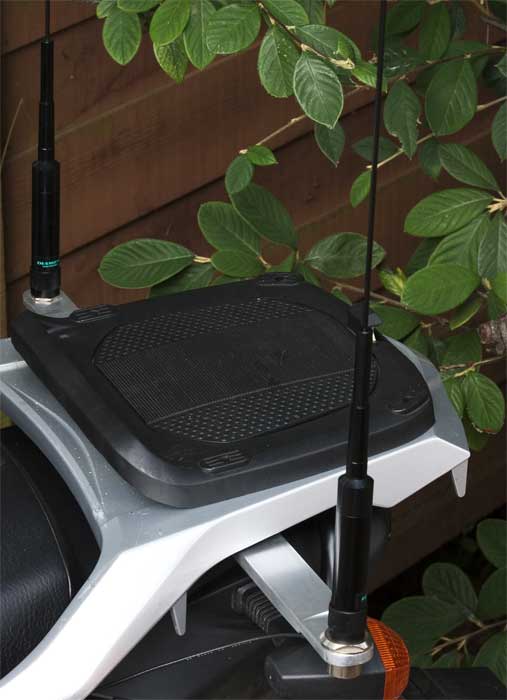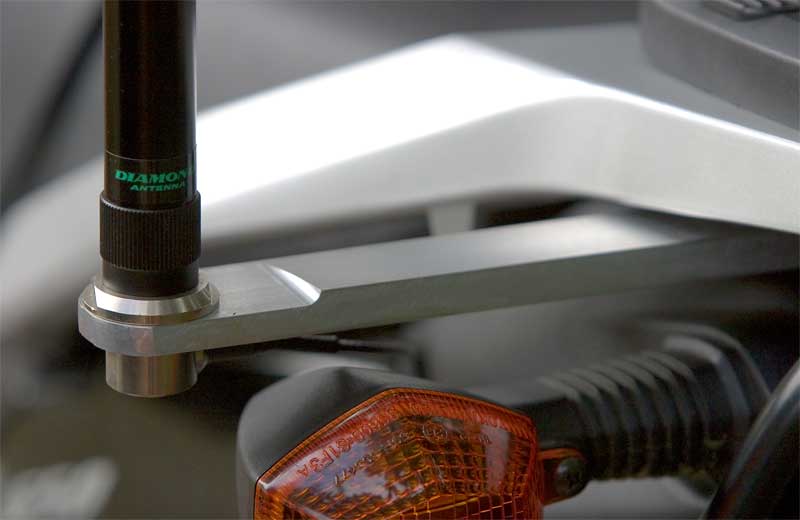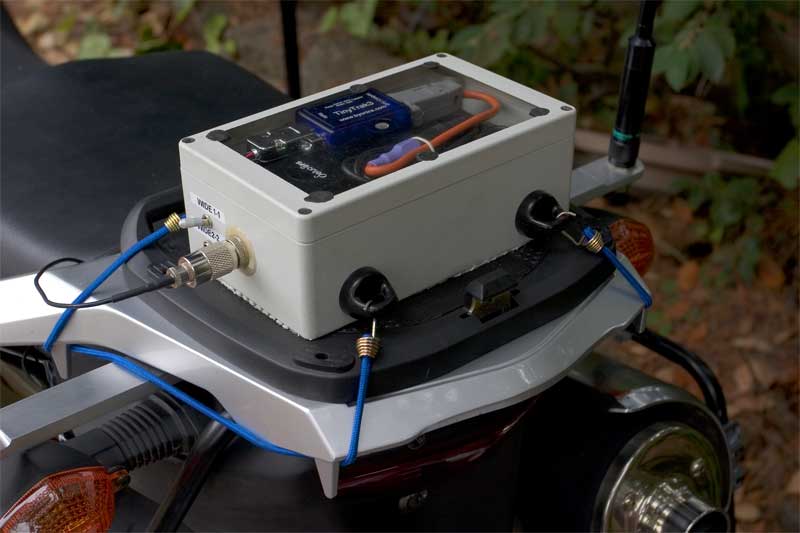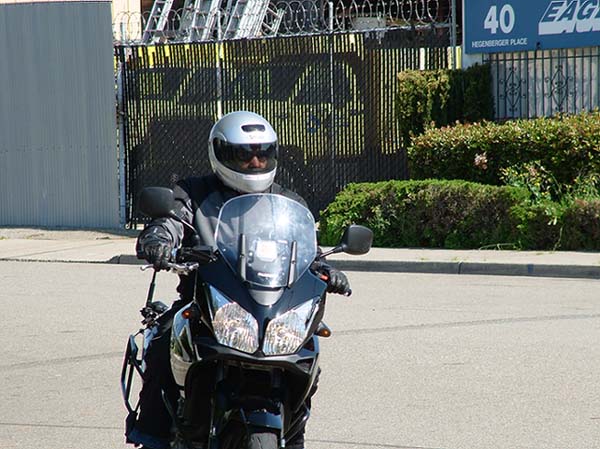
That's me on my new motorcycle, a 2004 Suzuki V-Strom 650 (sometimes known as a DL650). As if ham radio wasn't an expensive enough hobby, I had to start a new one last year.
Of course, I had to install as many electronic gadgets on it as I could.
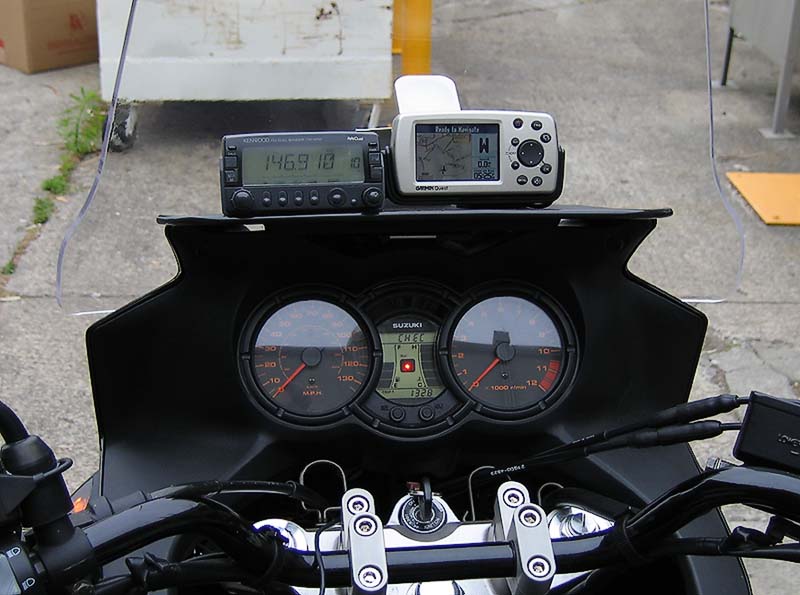
On the left is the control head for a Kenwood TM-G707A VHF/UHF transceiver, on the right is a Garmin Quest GPS receiver with voice routing. The accessory shelf was designed by Ray Fagan and is available through California Sport Touring.
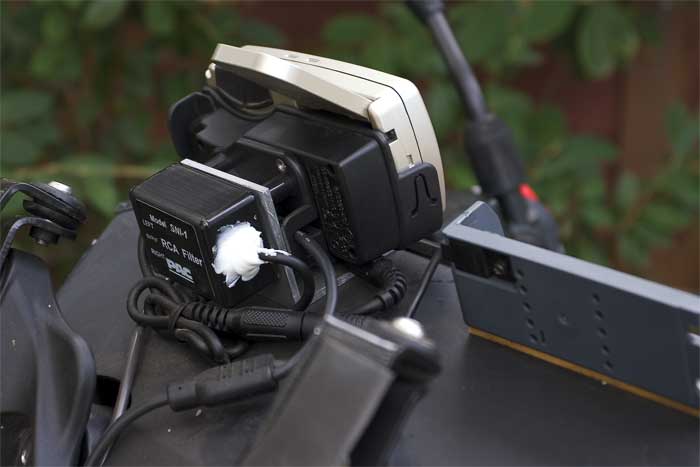
While I started with the original Garmin suction-cup mount and modified it for motorcycle use, the management of the external audio amplifier that the Quest requires was a problem in the motorcycle environment -- It was always getting loose inside the cowling or getting in the way of other equipment. With the introduction from Garmin of a mount specifically for motorcycles, it made sense to upgrade. Garmin integrated the amplifier into the mount and did away with the "bridge" amplifier design that causes problems with grounded audio systems. A piece of 1/8x2-inch aluminum L-stock provides a solid connection between Garmin's mount and the shelf.. Stuck to the back of the L-stock is a isolation filter which I added to break up the ground loop between the Quest and the AmpliRider which was introducing noise into the system.
The Kenwood G707 main unit fits under the Strom's seat:
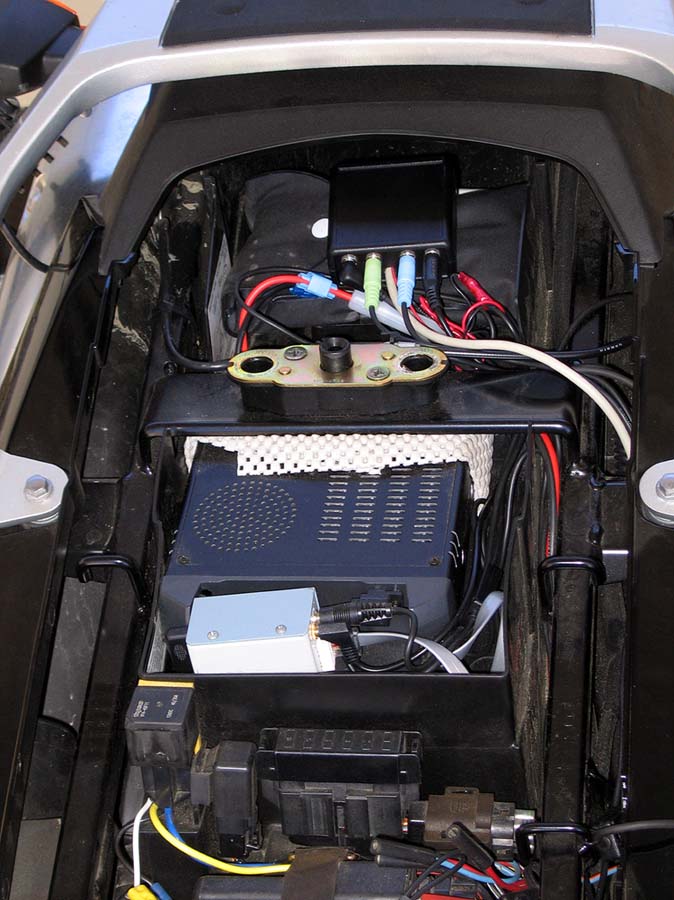
Just in front of the storage box, you can see the 6-circut auxiliary fuse block which takes mini ATM fuses. To its left, stuck to the edge of the box with mounting tape, is a relay activated by the ignition switch which allows half of those circuits to be switched, the other half un-switched. There is also a ground terminal strip just out of the picture below the relay. The radio is on an un-switched circuit so I can use it when I'm parked, but I've added a timer in line with the power that cuts out an hour after the engine is switched off to prevent the radio and amplifier from running the battery down.
Just inside the storage box is a blue box which contains interconnects between the radio and the helmet wiring. I started with a Motocom helmet setup for Kenwood radios, but I didn't like any of the transducers and ended up replacing just about everything except the wire and the connectors -- More on that later. The box also has a 3v regulator to provide power for the electret microphone.
Behind (above) the blue box is the TM-G707A main unit. The transmitter puts out 50W on 2M, and 35W on 440. I chose the G707 because the microphone connection was in the main unit instead of the control head, and the controls are relatively simple and have a large, readable display. You don't have a whole lot of ability to manipulate radio controls while riding a motorcycle (and wearing protective gloves). It can also be modified fairly easily to operate on FRS and GMRS channels, which are used a lot in bike-to-bike communications. I didn't do anything to permanently mount the Kenwood, it is just wedged under the seat support and padded with some foam rubber. Where can it go?
Running over the radio is the seat support and latch. Behind that, with the blue and green plugs going into it, is the AmpliRider audio mixer/amplifier. This takes audio from the Kenwood, the Garmin Quest, and one other input (usually for my iPod) and mixes them together to drive the helmet speakers. The volume control is remote and mounted on the handlebars
